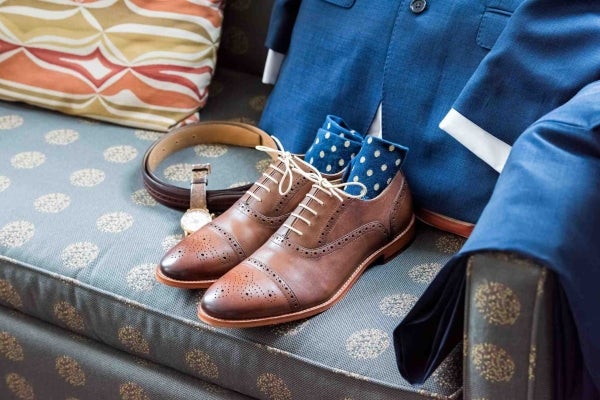
How to dress for any job interview
06/20/23Dressing for success is more than a popular saying.
It’s a critical component in acing your next job interview.
Your choice of attire significantly influences the first impression you make on potential employers. It can also reflect the confidence you have in yourself and your skills.
This elevates the importance of your interview outfit from something to consider to something that requires thought and planning.
Consider some tips for how to dress for your next job interview to present your best self with confidence and professionalism, whether it’s in your home country or afar.
Unraveling an organization’s dress code
You need a clear understanding of the expectations of the company you’re interviewing with before you can select an outfit.
There are solid ways to gather information about the dress code that you can use to avoid overdressing, underdressing, or dressing inappropriately.
Ask the employment recruiter about the dress code
Ask the recruiter or coordinator that schedules your interview for specific information about the dress code. Don’t be tempted to stop with that advice though. Recruiters who are largely unfamiliar with a company’s dress and culture can sometimes get it wrong.

Don’t stop there: Researching dress code standards
Consider the experience of “Louis,” who was mistakenly told by a recruiter that the office dress culture was business formal. After purchasing an elegant, expensive suit, Louis soon saw that he’d been misled in that the dress code was business casual.
Experiences like Louis’s point out that you shouldn’t solely rely on one source to unlock a business’s dress code.
Search for the organization’s dress code
Research the company's website, employee handbook, or contact their human resource department for official dress code information.
Review social media and the company’s website
Check the company's social media profiles, particularly photos of employees or events, to get a sense of the dress culture.
Also, review the company's website and career page for any information or hints about the dress code. If their website uses images from real employees, it might shed light on dress code expectations.
When in doubt about what to wear . . .
Opt for slightly more formal attire to ensure you are dressed appropriately regardless of the specific dress code.
Dressing for an important interview
Once you have a clear understanding of the dress code, you’ll want to select an outfit that aligns with it. The following tips will help you balance comfort and professionalism so that you make an excellent first impression.

1. Dress for the position
Consider the level of formality associated with the position you're interviewing for when selecting an outfit. Senior-level roles may require more formal attire than entry-level positions.
2. Dress slightly more formally than required
It's better to be slightly overdressed than underdressed. You don’t have to go over the top, but dressing up a bit more than the minimum requirements can send the message that you take the opportunity seriously.
3. Pay attention to fit and comfort
Make sure your interview outfit fits well and allows for comfortable movement. Ill-fitting or tight clothing can be distracting and may make you feel less confident.

4. Lean toward conservative colors
In most situations, it is best to stick to neutral colors like black, navy, or brown. If you’re in a highly artistic field, you may have more leeway. Neutral colors convey professionalism and are less likely to be distracting.
If the organization has a lively and upbeat environment, add an element of color such as a bright top with neutral bottoms.
5. Accessorize with care
Keep your accessories minimal and tasteful or skip them altogether. Opt for modest jewelry and a simple watch. Avoid flashy or distracting accessories that may divert attention from the conversation.
6. Maintain a polished appearance
Pay attention to grooming details, especially in regard to hair and nails. Make sure your clothes are clean, wrinkle free, and well pressed. For in-person interviews, avoid excessive cologne or perfume, and please, don’t chew gum.
7. Consider scent sensitivities
Go light on applying perfumes and colognes. You don’t want to overpower the room with your scent. You may want to leave a lasting impression at your interview, but make sure it is not your scent that stays behind. If in doubt, don’t wear applied scent or heavily perfumed laundered clothing.

Culturally appropriate attire for international interviews
When interviewing for a job in your non-native country, it's crucial to respect and adhere to another country’s cultural norms and expectations. Never assume that words like “professional” or “casual” dress have the same meaning as your own country’s culture when you’re seeking dressing advice for an international interview.
Here are some general global interview attire guidelines to consider:
- Ask for specific guidance: Ask the recruiter or interview coordinator for specific advice on what to wear. When possible, ask for examples so you can see acceptable attire. Also, ask for what not to wear to further hone in on what is truly considered appropriate.
- Research the country's cultural norms: Gain insights into the local customs, traditions, and typical expectations around clothing. Cultural etiquette guides and online resources can provide valuable information.
- Understand the significance of colors and symbols: Colors and symbols can carry different meanings in various cultures. For instance, colors such as red and white may have cultural associations that should be avoided. If you’re unsure, provide the colors you desire to wear to the recruiter and ask if they are appropriate.
- Dress conservatively: When in doubt, it's best to err on the side of caution and choose more conservative attire that’s associated with the culture. Avoid revealing clothing or excessively casual outfits, as they may be seen as disrespectful or inappropriate with a company’s code.
In addition to your attire, the ability to speak one of the top languages for international business in the country in which you’re interviewing may improve your chances of getting hired.
What if I have stringent religious attire and grooming rules to which I adhere?
If you are interviewing for a job in the United States and you sincerely adhere to specific religious dress or grooming codes, be sure to familiarize yourself with the U.S. Equal Employment Opportunity Commission laws prior to interviewing. Perform research on employment opportunity religious attire and grooming laws for specific countries outside the U.S.
Video conferencing interview attire
Video interviews are common for remote, hybrid, and in-office roles, especially early on in the recruiting process. Learn about video conferencing etiquette below. While some of the same rules apply, there are a few extra details you’ll want to keep in mind when dressing for an online interview. A few include:
- Dress professionally: Wear attire that is appropriate for the position and company culture, even though the interview or role is virtual. Avoid dressing overly casual simply because you’re doing the interview remotely.
- Lean toward solid colors and avoid patterns: Solid colors like blue or gray tend to appear better on camera and help maintain a professional look. Avoid distracting patterns that may not translate well on video.
- Look at your on-camera background: Select a clean and uncluttered background for your video interview. Avoid busy or distracting elements that may take the focus away from you.
- Pay attention to your grooming: Your face is front and center during a video interview, so make sure that your hair and beard are well groomed. Small distractions can become amplified when it’s just your face on the screen.
Are you a remote leader or hiring manager? Learn the essential skills for remote leadership.
Learn global leadership and management skills: Go global and get mobile
Mastering the art of dressing for interviews is a valuable skill that can boost your confidence and enhance your chances of success.
Dressing for interviews is not about mere appearances. It also conveys your attention to detail, your professionalism, and your respect for the opportunity at hand. Gaining essential international skills is also important.
The world is rapidly changing and businesses are increasingly expanding across continents to become global. Having global leadership and management business skills is more important than ever to succeed in today’s and tomorrow’s transnational business.
We invite you to find your path in global leadership, management, and business.




